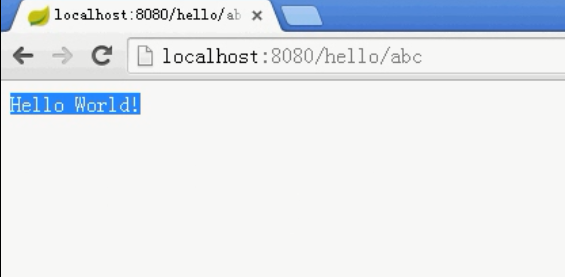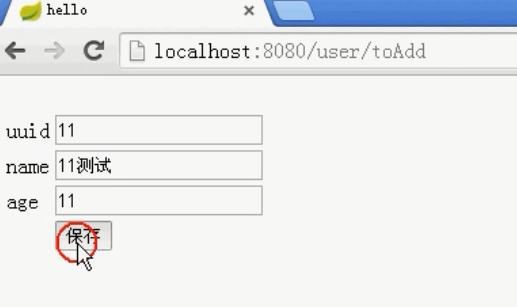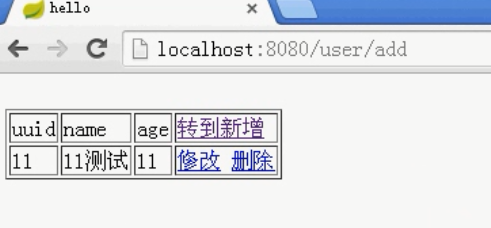Java教程
Springboot快速上手- 第二篇 helloWord走起
1 基础工程创建
##1:创建一个maven工程
##2:加入parent
<parent>
<groupId>org.springframework.boot</groupId>
<artifactId>spring-boot-starter-parent</artifactId>
<version>1.5.6.RELEASE</version>
</parent>
##3:加入启动依赖
<dependency>
<groupId>org.springframework.boot</groupId>
<artifactId>spring-boot-starter-web</artifactId>
</dependency>
##4:设置properties
<properties>
<java.version>1.8</java.version>
<project.build.sourceEncoding>UTF-8</project.build.sourceEncoding>
<start-class>com.cc.Application</start-class>
</properties>
##5:配置springboot 插件
<build>
<finalName>springbootstudy</finalName>
<plugins>
<plugin>
<groupId>org.springframework.boot</groupId>
<artifactId>spring-boot-maven-plugin</artifactId>
</plugin>
</plugins>
</build>
##6:开发Controller
@Controller
@RequestMapping("/hello")
public class FirstController {
@RequestMapping("/abc")
@ResponseBody
public String abc() {
System.out.println("now in FirstController.abc");
return "Hello World!";
}
}
##7:启动类
@SpringBootApplication
public class App {
public static void main(String[] args) {
//负责启动引导应 用程序
SpringApplication.run(App.class, args);
}
}
##8:启动运行
先运行启动类,然后在浏览器输入:http://localhost:8080/hello/abc
@SpringBootApplication:开启组件扫描和自动配置,
实际 上,@SpringBootApplication将三个有用的注解组合在了一起:
Spring的@Configuration:标明该类使用Spring基于Java的配置
Spring的@ComponentScan:启用组件扫描
Spring Boot的@EnableAutoConfiguration:开启Spring Boot自动配置
2 加入数据层
##1:环境设置
(1)加入依赖
<dependency>
<groupId>org.springframework.boot</groupId>
<artifactId>spring-boot-starter-data-jpa</artifactId>
</dependency>
<dependency>
<groupId>mysql</groupId>
<artifactId>mysql-connector-java</artifactId>
<version>5.1.43</version>
</dependency>
(2)在数据库中创建一个库springbootstudy,同时建一个表tbl_user,有如下字段:uuid、name、age
(3)配置数据源、配置jpa对hibernate的支持,在resources文件夹中建立一个application.properties文件,基本配置如下:
spring.datasource.driverClassName=com.mysql.jdbc.Driver spring.datasource.url=jdbc:mysql://127.0.0.1:3306/springbootstudy?useUnicode=true&characterEncoding=UTF-8 spring.datasource.username=root spring.datasource.password=root spring.datasource.max-active=20 spring.datasource.max-idle=8 spring.datasource.min-idle=8 spring.datasource.initial-size=10 spring.jpa.database=MySQL spring.jpa.show-sql=true spring.jpa.generate-ddl=false spring.jpa.hibernate.ddl-auto=update spring.jpa.properties.hibernate.current_session_context_class=org.springframework.orm.hibernate4.SpringSessionContext spring.jpa.properties.hibernate.format_sql=true spring.jpa.properties.hibernate.use_sql_comments=false spring.hibernate.packageScan=com.cc spring.jta.transaction-manager-id=transactionManager spring.jpa.properties.hibernate.dialect=org.hibernate.dialect.MySQL5Dialect
2:添加user模块,先写vo
3:添加dao及实现,DAO接口示例如下:
public interface UserDAO<M extends UserModel> {
public String create(M m);
public void update(M m);
public void delete(String uuid);
public M getByUuid(String uuid);
public List<M> getAll();
}
4:添加java配置
为了支持直接注入Hibernate的SessionFactory,建立一个H4Conf的类,采用java配置的方式:
@Configuration
public class H4Conf {
@Bean
public SessionFactory sessionFactory(HibernateEntityManagerFactory hemf) {
return hemf.getSessionFactory();
}
}
添加Service及实现
添加Controller实现
3 添加页面,使用ThymeLeaf
##1:环境构建
(1)在application.properties中添加:
spring.thymeleaf.cache=false spring.thymeleaf.prefix=classpath:/templates
(2)添加依赖
<dependency>
<groupId>org.springframework.boot</groupId>
<artifactId>spring-boot-starter-thymeleaf</artifactId>
</dependency>
##2:在resources下面添加templates,在templates下面添加user文件夹,下面用来存放页面
##3:使用ThymeLeaf开发的页面,比如userAdd.html,示例如下:
<!DOCTYPE HTML>
<html xmlns:th="http://www.thymeleaf.org">
<head>
<title>hello</title>
<meta http-equiv="Content-Type" content="text/html; charset=UTF-8" />
</head>
<body>
<form th:action="@{/user/add}" method="post">
<table>
<tr>
<td>uuid</td>
<td><input type="text" name="uuid" id="uuid"/></td>
</tr>
<tr>
<td>name</td>
<td><input type="text" name="name" id="name"/></td>
</tr>
<tr>
<td>age</td>
<td><input type="text" name="age" id="age"/></td>
</tr>
<tr>
<td></td>
<td><input type="submit" value="保存"/></td>
</tr>
</table>
</form>
</body>
</html>
4 启动运行
http://localhost:8080/user/toList
-
Springboot应用的多环境打包入门11-23
-
Springboot应用的生产发布入门教程11-23
-
Python编程入门指南11-23
-
Java创业入门:从零开始的编程之旅11-23
-
Java创业入门:新手必读的Java编程与创业指南11-23
-
Java对接阿里云智能语音服务入门详解11-23
-
Java对接阿里云智能语音服务入门教程11-23
-
JAVA对接阿里云智能语音服务入门教程11-23
-
Java副业入门:初学者的简单教程11-23
-
JAVA副业入门:初学者的实战指南11-23
-
JAVA项目部署入门:新手必读指南11-23
-
Java项目部署入门:新手必看指南11-23
-
Java项目部署入门:新手必读指南11-23
-
Java项目开发入门:新手必读指南11-23
-
JAVA项目开发入门:从零开始的实用教程11-23






